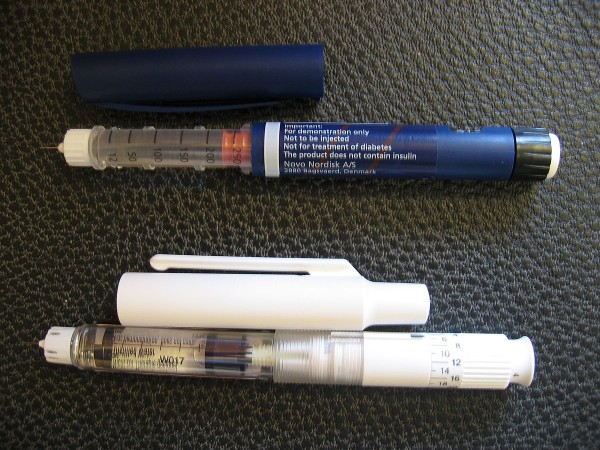
Attention anyone who uses an insulin pen! A study from Italy has found that if you don't shake your NPH insulin pen well before you inject yourself you may not be getting the right dosage of insulin. Not the pen before injecting results in wide variations in your insulin levels and blood sugar control, the study found.
NPH (neutral protamine Hagedorn) insulin is an intermediate-acting type of insulin that begins working within 30 minutes and is active for 6 to 24 hours. An NPH insulin pen comes prefilled with an insoluble mixture of crystals and liquid and a user can inject a measured dose with each injection. The pens usually also contain either a solvent or a rapid-acting insulin that takes effect sooner than then NPH insulin. The crystals settle within the pen and must be resuspended before injection. This is usually done by tipping the pen gently back and forth 20 times.
Researchers at Perugia University in Italy decided to find if it made a difference if patients did not resuspend their NPH insulin, and if they did not resuspend it, whether it would matter how they held the needle while they injected. They found that not shaking the pen and the position in which you hold the pen both make a big difference.
If the user does not shake the pen properly, the injection may not have the correct mixture of rapid- and intermediate-acting insulin, the study found. Insulin levels could vary by as much as 23% and blood sugar control could vary by as much as 62% depending on whether NPH insulin is shaken before injecting or not, the study reported.
The mixture also changes depending on whether the injection is done with the needle and pen horizontal or pointing up or down. Not shaking the pen before an injection could result in lower insulin levels in the blood if the needle is horizontal or pointing up or higher insulin levels if the needle is pointing down. These differences could result in blood sugar levels rising sooner or later when you do not resuspend the NPH insulin by shaking the pen first.
The study was published in the journal Diabetes Care.



